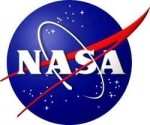Wed, Nov 10, 2010
Goal Is To Evaluate Potential New Systems, Concepts, And
Technologies
 NASA has selected 13 companies for negotiations leading to
potential contract awards to conduct systems analysis and trade
studies for evaluating heavy-lift launch vehicle system concepts,
propulsion technologies, and affordability.
NASA has selected 13 companies for negotiations leading to
potential contract awards to conduct systems analysis and trade
studies for evaluating heavy-lift launch vehicle system concepts,
propulsion technologies, and affordability.
The awards total approximately $7.5 million with a maximum
individual contract award of $625,000. Each company will provide a
final report to help lay the groundwork for the transportation
system that could launch humans to multiple destinations, including
asteroids, Lagrange points, the moon and Mars.
The selected companies are:
- Aerojet General Corp., Rancho Cordova, CA.
- Analytical Mechanics Associates, Huntsville, AL.
- Andrews Space, Tukwila, WA.
- Alliant Techsystems, Huntsville, AL.
- The Boeing Co., Huntsville, AL.
- Lockheed Martin Corp., Huntsville, AL.
- Northrop Grumman Systems Corp., Huntsville, AL.
- Orbital Sciences Corp., Chandler, AZ.
- Pratt & Whitney Rocketdyne, Canoga Park, CA.
- Science Applications International Corp., Huntsville, AL.
- Space Exploration Technologies Corp., Hawthorne, CA.
- United Launch Alliance, Centennial, CO.
- United Space Alliance, Huntsville, AL.
"These trade studies will provide a look at innovative launch
vehicle concepts, propulsion technologies, and processes that
should make human exploration missions more affordable," said Doug
Cooke, associate administrator of NASA's Exploration Systems
Mission Directorate at the agency's Headquarters in Washington. "If
we are to travel beyond low-Earth orbit, industry's collaboration
is essential to reduce the cost associated with our future
exploration goals and approaches and make the heavy-lift vehicle
affordable to build and fly."
The studies will include heritage systems from shuttle and Ares,
as well as alternative architectures and identify propulsion
technology gaps including main propulsion elements, propellant
tanks and rocket health management systems. The reports will
include assessments of various heavy-lift launch vehicle and
in-space vehicle that use different propulsion combinations. The
companies will examine how these combinations can be employed to
meet multiple mission objectives.
NASA will use the recommendations to evaluate heavy-lift launch
vehicle concepts and propulsion technologies for affordability that
will be required to enable robust and sustainable future
exploration missions.
More News
Light Gun A handheld directional light signaling device which emits a brilliant narrow beam of white, green, or red light as selected by the tower controller. The color and type of>[...]
“We have performed extensive ground testing by comparing warm up times, full power tethered pulls, and overall temperatures in 100 degree environments against other aircraft >[...]
While Taxiing To Parking The Right Landing Gear Leg Collapsed, Resulting In Substantial Damage Analysis: The pilot made a normal approach with full flaps and landed on the runway. >[...]
From 2014 (YouTube Edition): Exotic Rebuild Reveals Aerial Work Of Art During EAA AirVenture 2014, ANN's Michael Maya Charles took the time to get a history lesson about a great ai>[...]
Also: Project Talon, McFarlane Acquisition, Sky-Tec Service, JPL Earth Helo Tests Bombardier has earned a round of applause from the business aviation community, celebrating the fo>[...]
 ANN's Daily Aero-Term (12.13.25): Light Gun
ANN's Daily Aero-Term (12.13.25): Light Gun Aero-News: Quote of the Day (12.13.25)
Aero-News: Quote of the Day (12.13.25) NTSB Final Report: Gippsland GA-8
NTSB Final Report: Gippsland GA-8 Classic Aero-TV: Historically Unique -- Marlin Horst's Exquisite Fairchild 71
Classic Aero-TV: Historically Unique -- Marlin Horst's Exquisite Fairchild 71 Airborne 12.12.25: Global 8000, Korea Pilot Honors, AV-30 Update
Airborne 12.12.25: Global 8000, Korea Pilot Honors, AV-30 Update



